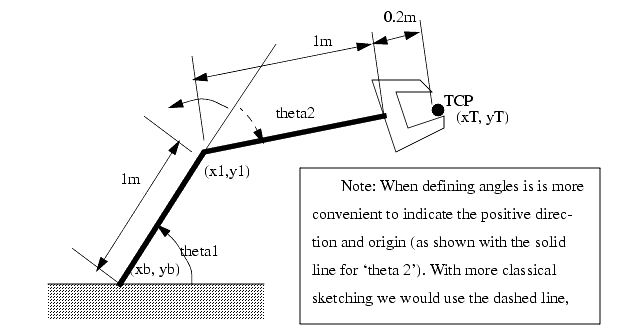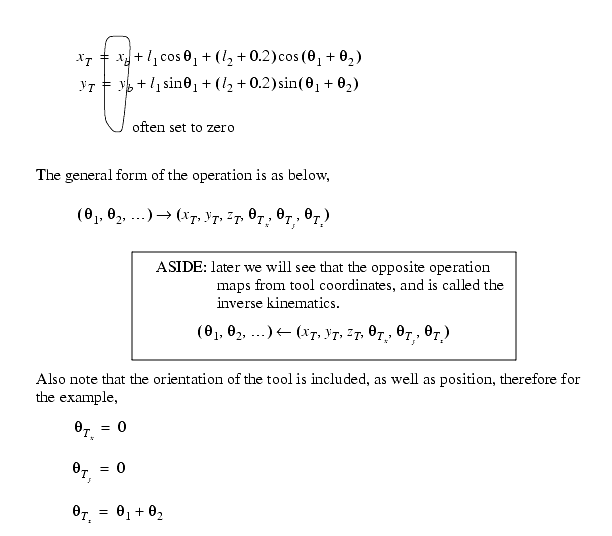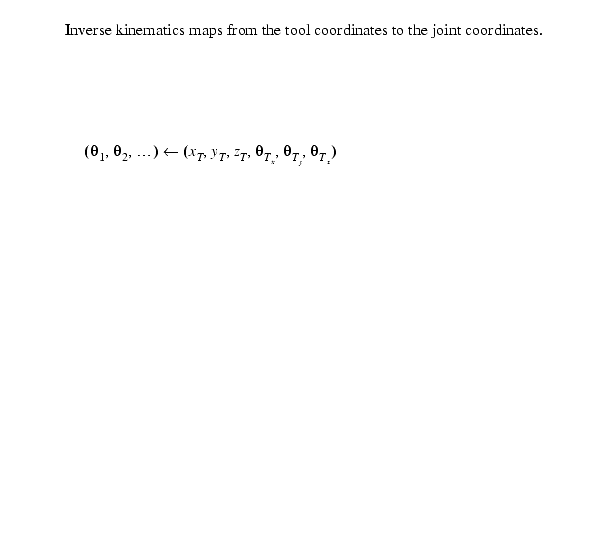
|
|
|
18.1 KINEMATICS
������������A robot must be able to map between things that it can control, such as joint angles, to the position of the tool in space.
Describing the position of the robot in terms of joint positions/angles is Joint Space.
Real space is often described with a number of coordinate systems,
Positions can also be specified with respect to the robot base (Robot Coordinates), or globally (World Coordinates).
18.1.1 Basic Terms
������������

Robot base coordinates don't move and are often used to specify robot tool position and orientation. (centre of the robots world)
Link/Joint Coordinates - specify where joints, endpoints or centers are located.
Tool coordinates - determine where the tool is and what orientation it is in.
World Coordinates - relates various robots to other robots and devices.
Coordinate transformation - Can map from one set of coordinates to another. Most common method is matrix based. One special case of this is the Denavit-Hartenrberg transformation.
18.1.2 Kinematics
������������

Forward kinematics involves finding the endpoint of the robot (xT, yT) given the joint coordinates (theta1, theta2)
There a number of simple methods for finding these transformations,
18.1.2.1 - Geometry Methods for Forward Kinematics
������������For simple manipulators (especially planar ones) this method is often very fast and efficient.
The method uses basic trigonometry, and geometry relationships.
To find the location of the robot above, we can see by inspection,

The problem with geometrical methods are that they become difficult to manage when more complex robots are considered. This problem is overcome with systematic methods.
18.1.2.2 - Geometry Methods for Inverse Kinematics
������������To find the location of the robot above, we can see by inspection,

Mathematically this calculation is difficult, and there are often multiple solutions.
18.1.3 Modeling the Robot
������������If modeling only one link in motion, the model of the robot can treat all the links as a single moving rigid body,

If multiple joints move at the same time, the model becomes non-linear, in this case there are two approaches taken,
Search for More: |

Custom Search
|

|